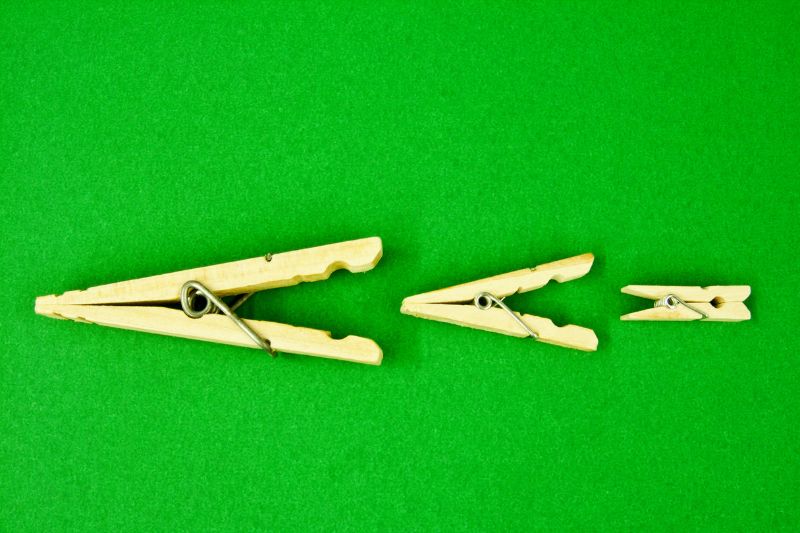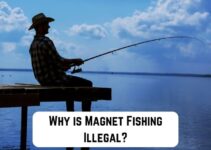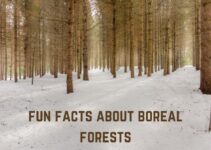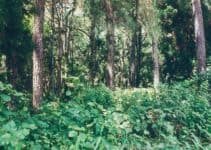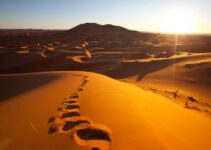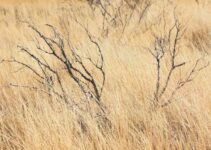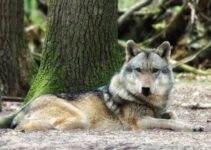We all depend upon food to survive. It gives us energy, which is necessary for living beings to grow.
But did you know that there is a process of creating this food?
Indeed, several different plants and animals depend upon this creation to survive, which is where food chains and food webs creep in!
A food chain is a system used to transmit energy from one organism to the next. When these systems are used in ecology, they are known as the food web.
A food chain describes how a particular organism collects its food. In other words, a food chain is a sequence of who eats whom in a biological community or an ecosystem to obtain food.
A food chain is a way of depicting the flow of energy from one organism to the next and to the next, and so on. Everyone needs the energy transmitted through a food chain to survive.
A food chain basically shows how living things get food and how energy and nutrients are passed from creature to creature.
According to Wikipedia,
“A food chain is a linear network of links in a food web starting from producer organisms (such as grass or trees which use radiation from the sun to make their food) and ending at apex predator species (like grizzly bears or killer whales), detrivores (like earthworms or woodlice), or decomposer species (such as fungi or bacteria).”
Sunshine is the main energy source for all living organisms. It is needed to provide plants with the food they need as well as to give humans and others energy that keeps them healthy and free of disease.
There are four basic parts of a food chain which include:
- Producers: Producers, or plants, are given this name because they are the only organisms producing their own food and serve as food for some organisms.
- Consumers: A consumer, as the name suggests, is an organism that eats something, such as animals or plants. There are both carnivores and herbivores, and parasites and scavengers.
- Scavengers: A scavenger is a bacteria or fungi. Although we aren’t too keen on scavengers, they are important in the food chain because they help convert dead matter into nitrogen and carbon, which is then released into our atmosphere.
- Decomposers: Decomposers come into the equation to finish off anything the scavengers leave behind.
Let’s take a more in-depth look at these parts of the food chain and learn how they work.
Producers

Producers, or plants if you like, give us the energy needed through a process known as photosynthesis. This process, combined with minerals and nutrients from the soil, allows a plant to grow, bloom, and reproduce.
Some of the foods that are produced through this process include:
- Apples
- Pecans
- Peaches
- Carrots
- Potatoes
Plants create a great amount of energy that is needed to provide food. They use sunlight to help them grow. Yes, all those green plants you see out there are using the sunlight to produce food for themselves and help themselves grow.
Many animals depend on these plants to survive, which is where consumers come in!
Consumers
Consumers depend on an external source of food for sustenance. They can be categorized into three: Primary, secondary, and tertiary consumers.
Let’s take a look at each of these categories:
Primary Consumers

Primary consumers are known as herbivores in the animal world. These consumers are given the name because they are the first to eat the plant. In other words, they are just above the plants in the food chain.
Once the plant is eaten, the energy is transferred from them to the animal. Classic examples of primary consumers include antelopes, grasshoppers, rabbits, zebras, and other herbivores.
Secondary Consumers

Secondary consumers are animals that depend on the primary consumers for food. Energy is transferred to the secondary consumer just as to the primary consumer.
Secondary consumers are carnivores and tend to be larger than their prey. Classic examples of secondary consumers include mice that eat grasshoppers and wolves that eat rabbits.
Tertiary Consumers

Tertiary consumers are carnivores who consume other carnivores. A human is considered a tertiary consumer, as are several other animals.
Lions and some members that naturally belong to the class of secondary consumers can also be considered tertiary consumers, and that’s because they don’t have natural predators when they are alive.
However, when they die, they become a tasty meal for many animals. Generally, this is not a concern that a human has, thankfully, but many animals do. Consider a tertiary consumer like a snake that consumes a mouse, which in turn eats a grasshopper relying on green plants for food.
Scavengers and Decomposers
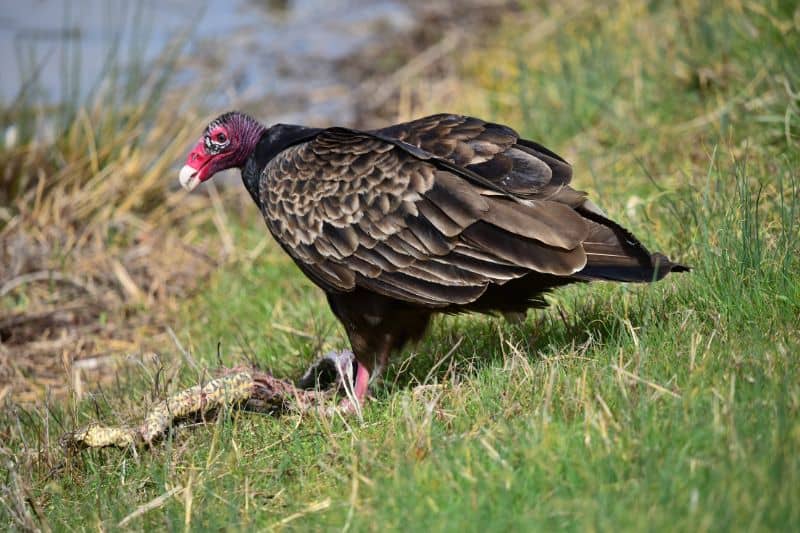
The last link in the chain is scavengers and decomposers. When an animal lives out its life and dies naturally, it leaves its carcass behind.
Although a carcass, the dead animal still contains some energy that needs to be passed on to the next member of the food chain, which is where scavengers and decomposers come in!
A scavenger shows up to feast on the carcass. The scavenger has the following qualities:
- It’s an animal attracted to the smell of the dead animal.
- Scavengers eat the dead animal.
- Most of the time, the smell alerts the scavenger to the presence of the dead animal. Sometimes, however, the scavenger gains clues from other groups of scavengers who’ve come to feast.
- Scavengers include foxes, hyenas, bears, coyotes, and turkey vultures.
- Scavengers have a keen sense of smell
- These animals eat the animal, leaving behind its carcass
As scavengers are eating the animal, insects come in and break the animal down even further than the scavenger.
Maggots, ants, and beetles are common decomposers. Once they eat the animal, they lay eggs. The larvae that are born continue to eat the decomposing body. Bacterial and fungal matter finish off the decomposition process until it is entirely one.
The energy that the animal had is passed on to the animals and insects that have eaten it.
Here are a few more facts important to know:
- Bacteria and fungi return the matter to the soil. It is then reused for plant growth and energy.
- It all seems like a nasty process, and you certainly don’t want to stand by when it is happening. But think of it like this: what kind of world would we live in without scavengers and decomposers?
A Look at The Food Web
The food web is essentially similar to a food chain but operates in a more intricate manner. It constitutes a network of numerous food chains. The food web’s purpose is to ensure an abundant supply of food, ensuring that all plants, animals, and insects receive a sufficient amount.
To help you understand what a food web is and its significance, let’s assume that grasshoppers exclusively ate grass. In that case, if all grass were to get depleted, the grasshoppers would remain without food and eventually die.
Now, the food web ensures that this doesn’t happen. It ensures that every member of the food chain has multiple sources of food, so their existence doesn’t have to fully depend on that of a single member just below them in a food chain. All this interconnectedness forms a network of food chains, what we’re now referring to as the food web.
But one thing you still need to know is that an organism’s role in a food chain depends on the number of predecessors along the chain.
For instance, a human is an omnivore who can eat animals and plants. Assuming that the human eats plants, they become the primary consumers, although they still possess the potential to feature in a much higher position in the food chain, say by eating a goat, bird, or any other non-producer in the food chain.
Some Facts About Food Web and Food Chain
Here are a few facts about the food web and the food chain that are important to understand.
- A food web is a group of different food chains that work together to make the ecosystem.
- Food chains in the food web are interlinked at one point or another.
- The food chain is the pattern that energy uses to transmit to producers to decomposers.
- A food chain only follows one path as animals find food.
- A food web shows the many different paths plants and animals are connected.
- A food web is several food chains connected together.
- Food chains always begin with a plant and end with an animal.
- All living beings need energy to survive. These food web and food chain processes make it possible to have that energy.
- More than 100,000 different decomposers exist in the world
- Four types of consumers exist: A carnivore eats nothing but animals; an herbivore eats nothing but plants; an omnivore eats both plants and animals; scavengers eat dead animals and their carcasses.
- All links to the food chain are necessary. Even if one of the steps of the food chain is eliminated, it could cause disastrous results.
- Usually, plants are at the beginning of the food chain, and humans are at the end.
Importance of Food Chains
Food chains are important because they show the intricate relationships in ecosystems. It is seen that in food chains, each organism fills a specific niche in an ecosystem. Food chains reveal how each organism depends on someone else for survival.
Some of the benefits of food chains include:
1. The Food Chain Balances the Ecosystem
Food chains display the interconnectivity between members of a food chain. Thus, they help scientists learn more about ecosystems and the interdependency between the several members, helping the experts come up with a technique to have the ecosystem stay balanced.
Every plant and animal species, whether big or small, depends on another plant or animal species to some extent for its survival. It could be bees collecting pollen from a flower, photosynthesis of plants, deer eating shrub leaves, or lions eating the deer. If a single point is lost, the balance in the ecosystem will be shattered.
2. Food Webs Show Plants Are the Foundation
Food webs are important tools that help underscore the essence of plants by showing them as the foundation of all ecosystems and food chains. Photosynthesis is only the beginning of the food chain. Plants that have photosynthesis supply us with the food chain’s first product for nourishment.
In addition, plants are the source of the food we eat, the oxygen for survival and reproduction, our clothes, and even our furniture, and many other innumerable things for sustainability.
Plants also remove greenhouse gases from the air and provide habitat to many animals. Therefore, it is vital to understand the ecology of the environment with respect to plants.
3. Natural Selection
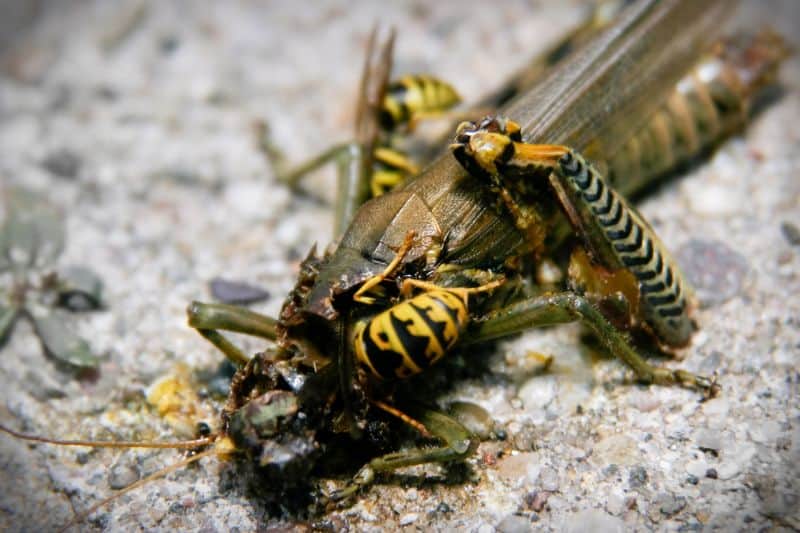
Food webs help us understand natural selection, showing the hierarchy of species, with carnivorous, omnivorous, and tertiary animals at the top of all food chains.
It is the physical and behavioral adaptations of plants and animals that represent a pattern of consumption based on natural survival attributes and instincts.
Food webs also explain how food scarcities due to overhunting, poaching, global warming, and habitat destruction disrupt populations, leading to extinction.
4. The Movement of Energy and Nutrient
A food chain describes how energy, nutrients, and organic compounds move through an ecosystem. Plants are at the base that produce the energy. This energy then moves up to higher-level organisms like herbivores. After that, when carnivores eat the herbivores, energy is transferred from one to the other. This series goes on until it reaches the decomposers.
5. Food Chain Determines the Trophic Level of Organisms
Depending on the specific food chain, an organism can be situated at multiple trophic levels.
For instance, seals might be regarded as apex predators at the highest trophic level in environments where they consume fish, acting as primary or secondary consumers.
However, in different ecosystems where seals become prey for sharks, they could be seen as occupying a lower trophic level. These relationships are more evident in food webs and less noticeable in food chains or pyramids.
Final Thoughts
It is very interesting to learn the process of the food web and the food chain. We often simply sit down and eat rather than think about where our food is coming from or the process it took to reach our tables. When you learn more about the food web and chain, you can easily care more about your foods.
